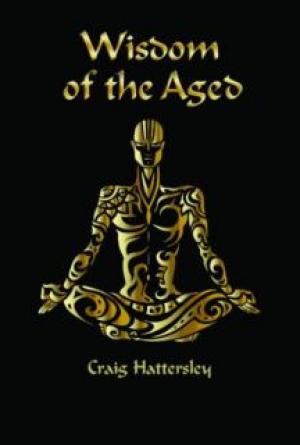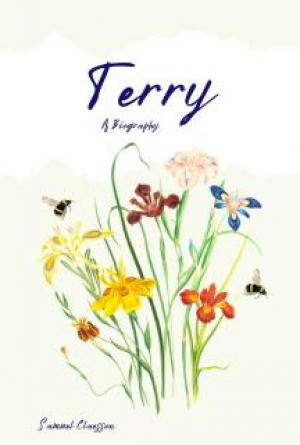Appendix
The following appeared some time ago in one of the London evening papers, and I make bold, because of its truth and vigour, to insert it here:
THE LAND OF STEVENSON,
ON AN AFTERNOON'S WALK
WILL there be a "Land of Stevenson," as there is already a "Land of Burns," or a "Land of Scott," known to the tourist, bescribbled by the guide-book maker? This the future must tell. Yet will it be easy to mark out the bounds of "Robert Louis Stevenson's Country"; and, taking his native and well-loved city for a starting-point, a stout walker may visit all its principal sites in an afternoon. The house where he was born is within a bowshot of the Water of Leith; some five miles to the south are Caerketton and Allermuir, and other crests of the Pentlands, and below them Swanston Farm, where year after year, in his father's time, he spent the summer days basking on the hill slopes; two or three miles to the westward of Swanston is Colinton, where his mother's father, Dr Balfour, was minister; and here again you are back to the Water of Leith, which you can follow down to the New Town. In this triangular space Stevenson's memories and affections were firmly rooted; the fibres could not be withdrawn from the soil, and "the voice of the blood" and the longing for this little piece of earth make themselves plaintively heard in his last notes. By Lothian Road, after which Stevenson quaintly thought of naming the new edition of his works, and past Boroughmuirhead and the "Bore Stane," where James FitzJames set up his standard before Flodden, wends your southward way to the hills. The builder of suburban villas has pushed his handiwork far into the fields since Stevenson was wont to tramp between the city and the Pentlands; and you may look in vain for the flat stone whereon, as the marvelling child was told, there once rose a "crow-haunted gibbet." Three-quarters of an hour of easy walking, after you have cleared the last of the houses will bring you to Swanston; and half an hour more will take the stiff climber, a little breathless, to
THE TOP OF CAERKETTON CRAGS.
You may follow the high road - indeed there is a choice of two, drawn at different levels - athwart the western skirts of the Braid Hills, now tenanted, crown and sides of them, by golf; then to the crossroads of Fairmilehead, whence the road dips down, to rise again and circumvent the most easterly wing of the Pentlands. You would like to pursue this route, were it only to look down on Bow Bridge and recall how the last-century gauger used to put together his flute and play "Over the hills and far away" as a signal to his friend in the distillery below, now converted into a dairy farm, to stow away his barrels. Better it is, however, to climb the stile just past the poor-house gate, and follow the footpath along the smoothly scooped banks of the Braid Burn to "Cockmylane" and to Comiston. The wind has been busy all the morning spreading the snow over a glittering world. The drifts are piled shoulder-high in the lane as it approaches Comiston, and each old tree grouped around the historic mansion is outlined in snow so virgin pure that were the Ghost - "a lady in white, with the most beautiful clear shoes on her feet" - to step out through the back gate, she would be invisible, unless, indeed, she were between you and the ivy-draped dovecot wall. Near by, at the corner of the Dreghorn Woods, is the Hunters' Tryst, on the roof of which, when it was still a wayside inn, the Devil was wont to dance on windy nights. In the field through which you trudge knee-deep in drift rises the "Kay Stane," looking to-day like a tall monolith of whitest marble. Stevenson was mistaken when he said that it was from its top a neighbouring laird, on pain of losing his lands, had to "wind a blast of bugle horn" each time the King
VISITED HIS FOREST OF PENTLAND.
That honour belongs to another on the adjacent farm of Buckstane. The ancient monument carries you further back, and there are Celtic authorities that translate its name the "Stone of Victory." The "Pechtland Hills" - their elder name - were once a refuge for the Picts; and Caerketton - probably Caer-etin, the giant's strong-hold - is one of them. Darkly its cliffs frown down upon you, while all else is flashing white in the winter sunlight. For once, in this last buttress thrown out into the plain of Lothian towards the royal city, the outer folds of the Pentlands loses its boldly-rounded curves, and drops an almost sheer descent of black rock to the little glen below. In a wrinkle of the foothills Swanston farm and hamlet are snugly tucked away. The spirit that breathes about it in summer time is gently pastoral. It is sheltered from the rougher blasts; it is set about with trees and green hills. It was with this aspect of the place that Stevenson, coming hither on holiday, was best acquainted. The village green, whereon the windows of the neat white cottages turn a kindly gaze under low brows of thatch, is then a perfect place in which to rest, and, watching the smoke rising and listening to "the leaves ruffling in the breeze," to muse on men and things; especially on Sabbath mornings, when the ploughman or shepherd, "perplext wi' leisure," it is time to set forth on the three-mile walk along the hill-skirts to Colinton kirk. But Swanston in winter time must also
HAVE BEEN FAMILIAR TO STEVENSON.
Snow-wreathed Pentlands, the ribbed and furrowed front of Caerketton, the low sun striking athwart the sloping fields of white, the shadows creeping out from the hills, and the frosty yellow fog drawing in from the Firth - must often have flashed back on the thoughts of the exile of Samoa. Against this wintry background the white farmhouse, old and crow-stepped, looks dingy enough; the garden is heaped with the fantastic treasures of the snow; and when you toil heavily up the waterside to the clump of pines and beeches you find yourself in a fairy forest. One need not search to-day for the pool where the lynx-eyed John Todd, "the oldest herd on the Pentlands," watched from behind the low scrag of wood the stranger collie come furtively to wash away the tell-tale stains of lamb's blood. The effacing hand of the snow has smothered it over. Higher you mount, mid leg-deep in drift, up the steep and slippery hill-face, to the summit. Edinburgh has been creeping nearer since Stevenson's musing fancy began to draw on the memories of the climbs up "steep Caerketton." But this light gives it a mystic distance; and it is all glitter and shadow. Arthur Seat is like some great sea monster stranded near a city of dreams; from the fog-swathed Firth gleams the white walls of Inchkeith lighthouse, a mark never missed by Stevenson's father's son; above Fife rise the twin breasts of the Lomonds. Or turn round and look across the Esk valley to the Moorfoots; or more westerly, where the back range of the Pentlands - Caernethy, the Scald, and the knifeedged Kips - draw a sharp silhouette of Arctic peaks against the sky. In the cloven hollow between is Glencarse Loch, an ancient chapel and burying ground hidden under its waters; on the slope above it, not a couple miles away, is Rullion Green, where, as Stevenson told in THE PENTLAND RISING (his first printed work)
THE WESTLAND WHIGS WERE SCATTERED
as chaff on the hills. Were "topmost Allermuir," that rises close beside you, removed from his place, we might see the gap in the range through which Tom Dalyell and his troopers spurred from Currie to the fray. The air on these heights is invigorating as wine; but it is also keen as a razor. Without delaying long yon plunge down to the "Windy Door Nick"; follow the "nameless trickle that springs from the green bosom of Allermuir," past the rock and pool, where, on summer evenings, the poet "loved to sit and make bad verses"; and cross Halkerside and the Shearers' Knowe, those "adjacent cantons on a single shoulder of a hill," sometimes floundering to the neck in the loose snow of a drain, sometimes scaring the sheep huddling in the wreaths, or putting up a covey of moorfowl that circle back without a cry to cover in the ling. In an hour you are at Colinton, whose dell has on one side the manse garden, where a bright-eyed boy, who was to become famous, spent so much of his time when he came thither on visits to his stern Presbyterian grandfather; on the other the old churchyard. The snow has drawn its cloak of ermine over the sleepers, it has run its fingers over the worn lettering; and records almost effaced start out from the stone. In vain these "voices of generations dead" summon their wandering child, though you might deem that his spirit would rest more quietly where the cold breeze from Pentland shakes the ghostly trees in Colinton Dell than "under the flailing fans and shadows of the palm."
Footnotes:
(1) Professor Charles Warren Stoddard, Professor of English Literature at the Catholic University of Washington, in KATE FIELD'S WASHINGTON.
(2) In his portrait-sketch of his father, Stevenson speaks of him as a "man of somewhat antique strain, and with a blended sternness and softness that was wholly Scottish, and at first sight somewhat bewildering," as melancholy, and with a keen sense of his unworthiness, yet humorous in company; shrewd and childish; a capital adviser.
(3) INFERNO, Canto XV.
(4) Alas, I never was told that remark - when I saw my friend afterwards there was always too much to talk of else, and I forgot to ask.
(5) Quoted by Hammerton, pp. 2 and 3.
(6) Tusitala, as the reader must know, is the Samoan for Teller of Tales.
(7) WISDOM OF GOETHE, p. 38.
(8) THE FOREIGNER AT HOME, in MEMORIES AND PORTRAITS.
(9) A great deal has been made of the "John Bull element" in De Quincey since his MEMOIR was written by me (see MASSON'S CONDENSATION, p. 95); so now perhaps a little more may be made of the rather conceited Calvinistic Scot element in R. L. Stevenson!
(10) It was Mr George Moore who said this.
(11) FORTNIGHTLY REVIEW, October, 1903.







